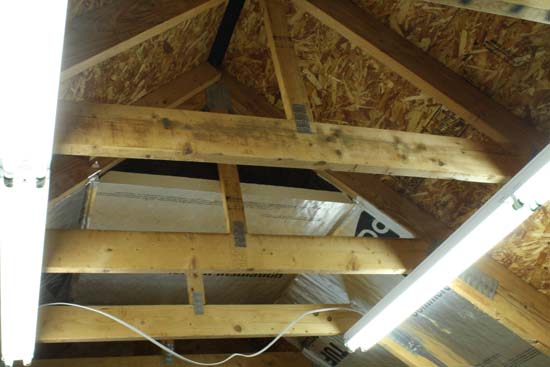Putting 1 Foil Faced Ridig Board Under Attic Roof

Johns manville r panel rigid roof insulation board offers r values of up to r 23 6 providing high thermal efficiency.
Putting 1 foil faced ridig board under attic roof. There s two ways you can go about with foam board insulation. Install ap foil faced foam boards between rafters directly against the bottom of the roof sheathing. This is an even more dense and more expensive foam board insulation. Cut ap foil faced foam sheathing to fit snuggly between the rafters.
Foil insulation is a radiant barrier and it works by. Foam board insulation in the attic can cut down on energy costs and simultaneously promote a more environmentally sound way of daily living. Foil insulation underlayment is recommended under a metal roof and in most cases the shiny side should be facing up but there s a catch. The r value of the insulation must meet local building code requirements for unvented attics to prevent condensation.
2 measure and cut the foam boards as. Then a second layer of plywood sheathing and asphalt shingles following the steps explained in this article. R panel is manufactured with a closed cell polyisocyanurate foam core bonded to fiberglass reinforced facers and designed for use over metal nailable and non nailable roof decks with a variety of membrane systems. Installing foam insulation boards in the attic is no that hard and can save you money compared with professional installation.
However foil faced iso panels are warranted as impermeable. I have 2x10 rafters. If you want to use them without creating a vapor barrier look for permeable iso panels faced with fiberglass. It provides an r value of 6 per inch of thickness and often comes foil faced to help reflect radiant heat.
Installing rigid foam insulation. 4 of polyiso under 4 of eps all above the original roof sheathing. I have at my disposal four inch polyiso board with the foil facing. Foam insulation boards are the best material with which to work when undertaking a do it yourself project because foam.
Select rigid foam insulation boards that are at least 1 2 inch less in thickness than the rafter space is deep if you plan to finish the attic as living space. Polyiso comes in several thicknesses and is used over house sheathing underneath siding or in attic spaces where its reflective properties are very effective.














































